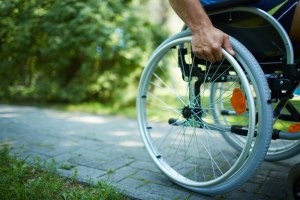10 Ways to Reduce and Manage Brain Fog
October 22, 2014 by Princess 12 Comments
Brain fog or fibro fog can be one of many frustrating aspects of living with severe pain and chronic illness, frequently an embarrassing symptom too. From fibromyalgia to CRPS to a whole catalogue of other pain conditions, when we are in pain, we just cannot think as well as we used to, which is of course entirely understandable though that doesn’t make it any easier to cope with.
Yet the cause of the fog isn’t fully understood and is not necessarily exclusively to do with living in high levels of pain. Many believe that it may have to do with pain patients’ inability to sleep well and because we are so chronically fatigued, pain itself can also obviously be entirely debilitating — it’s hard to concentrate when you’re in a lot of pain and experiencing sensory overload, which is why brain fog is not exclusive to fibromyalgia patients.
Symptoms of brain fog can range from mild to severe. They frequently vary from day to day, and not everyone has all of them. Confusion, forgetfulness, limited concentration, mixing up words, complete loss of speech, and severe short-term memory loss all fall under that irritating and frequently embarrassing umbrella of ‘brain fog’ or ‘fibro fog’.
Pain by its very nature, is designed to attract — and keep — your attention. Add to this the maladaptive neuroplasticity that occurs in chronic pain and complex conditions and it’s little wonder we are so clogged with the fog. Yet before resigning yourself to a life of “Um…” there are things that you can do to lessen this irritating — and often embarrassing — symptom. Here are 10 ways to manage and cope with brain fog. I’m sorry, what was I saying? Ahh yes. Tips.
Write it Down
Always make notes. Whether using apps on your mobile, Post-it notes, a notebook, or whatever works for you personally, all of these things help keep a record of what you need to remember. Using a notebook and carrying it everywhere, though perhaps a little old school, can often be a life-line.
Even if your home’s fine furnishings are hijacked by a hundred Post-it notes, if it helps you function, use them. Evernote is a personal favourite app and can be used on your mobile or computer. Other apps can help you remember things, such as Todoist, which — like Evernote — automatically syncs wherever you log in, which is useful for those moments of clarity when you need to write something down [and quickly, before that too slips into the ether].
Post-it notes, apps on your mobile phone and/or computer and notebooks can be sanity-savers.
Commune with Nature [Whenever Possible]
Our modern lives – with seemingly endless bleeps and gadgets, computers, TV, texting, social media, emails and phone calls all going at once – overstimulates the brain and increases our already high stress levels. Our brains can only hold one thought at a time and with severe pain, part of you is always already focused on the pain, making concentration more difficult. Constant interruptions disrupt our ability to focus, concentrate and retain information even further.
Nature has a calming effect. So sit outside if you are able to, enlist some help to take you to a park or natural place. If you are blessed with nature close to home, take advantage and stop to watch the sunset or just gaze at evening stars.
People who walked through a wooded park for 15 minutes significantly improved their performance on an attention test, according to a 2008 University of Michigan study. Those who walked on noisy city streets before testing stayed the same.
Although many princesses and princess in their respective towers may not have the luxury of being able to walk for 15 minutes, if you can, do and if it is beyond your limitations, still aim to be taken outside when it is warm enough (or you are wrapped up warm enough) and let its energies soothe you.
Increased exposure to sunlight, especially in patients with SAD (Seasonal Affective Disorder), may help you to think more clearly. “The beauty of nature will give your prefrontal cortex – the area of your brain that helps you focus – an opportunity to recharge,” says neurologist Marie Palinski, at Massachusetts General Hospital.
Organise Your Surroundings [as Much as Possible]
The more tasks that accumulate and the more chaos exists in your surroundings, the worse brain fog seems to be. If you’re surrounded by clutter and everything disorganised, it is hard enough for healthy people, let alone those of us who often find ourselves quite unable to even keep up with day-to-day activities, let alone organise our homes.
With high levels of pain and other debilitating symptoms, the idea of sorting through your possessions, organising your home and life is intimidating at best, impossible at worst. If you can enlist some help, do so. Say to your loved-ones how important it is, how it helps you both manage your symptoms and life, how — if they would help you with this — it would make a huge difference.
When crossing a room needs both rest and recovery, it makes a huge difference to be able to access what you need without flaring your pain, which of course lessens the associated brain fog; it’s impossible to think when flared-up. Anything that helps make your life less stressful will reduce the fog. Ensure things are within easy reach, as clear and organised as possible.
Even clearing and sorting a single draw or a donation box can make the start needed to instigate a new chapter. Of course, it’s hard to ask for help and many do not have the resources or people to dedicate time to helping. Another solution is to put a few strategies and routines in place. Routines and organisation strategies offer solutions because they become as automatic as habits themselves and reduce the distractions that clutter your thinking, try the following:
Tips to Reduce the Fog
- Use lists, reminders and calendars. Keep some of these tools, such as a calendar, in a prominent spot and develop a routine for using it.
- Use baskets to quickly get organised – They can be a swift and effective way to put related items, whether flare-up items, medications or simply your bathroom products, into one place. They look tidy and also are easy to keep tidy.
- Use medication boxes – these have the time and day printed on each compartment within the box so you know when to take your meds, as well as if you have already taken a dose. Vital for safety if your brain fog hampers with this.
- If you have a doctor’s or other kind of appointment, ensure everything is ready the night before. It can be useful to write out a check-list of what you need leave the house with. Medications, heat wraps, cushions and supports, any of the things that help you live and cope with pain.
- You can also place a check-list on the inside of your door so you do not forget anything when leaving your home.
- Put the items you need and use every day near to your bed, if mostly bedridden, or simply in the same place if housebound or with limited mobility.
- Always keep items you use regularly such as your keys in the same place.
- If your fog is thickest in the morning and you have plans, put out the clothes you want to wear the night before. If you also dress according to pain levels, especially when hypersensitivity makes wearing clothes so painful, ensure you have taken this into account in case it’s a particularly nasty pain day.
- Use your flare-up tool-kit (free when you sign-up to the newsletter) and put everything you need to help you make it through your flare in the same place/in a flare-up tool-kit box.
Change Routines
“When stuck in a rut, we’re constantly treading the same brain pathways. Engaging in a new activity literally wakes up our brains,” says neurologist Marie Palinski. When the same brain pathways are stimulated instead of creating new ones it can lead to a depletion in cognition. Without stimulus, areas of our brains work less efficiently yet each time we are immersed in a new experience or activity, it genuinely wakes up our brains. This is because the brain has to lay new neural pathways to process the new information.
Unlike the former view that our brains are fixed, our intelligence too, it’s now accepted that we have the power to instigate new pathways and consequently, light up our brains, helping to keep them vibrant and cognisant. If you find yourself stuck both physically and metaphorically, it can be difficult to help heal yourself or manage your pain.
Inspire a new positive chapter and also help reduce brain fog by changing your routine. It can be as simple as opting not to watch television and instead reading a book of poems or a novel you enjoy. If novels are tricky, try short stories or vignettes. They’re perfect little gems of distraction, even when your pain is high and thinking all the more compromised.
You will not only help your mood but also increase cognitive function. Numerous studies have found that excessive TV watching is associated with depression, lower cognitive function and a decline in overall physical health. In other life areas, the opposite can help.
Obviously, everything is so limited, particularly if stuck in bed or at home because of such severe symptoms but even baby steps and micro changes can offer a certain newness that is so frequently lost when life becomes a dull routine of simply trying to get through each day.
Bring new things into your life. Develop routines to become more efficient. Living with brain fog becomes easier on a schedule. Routines train the brain and allow for more mental energy to be directed elsewhere.
Pick Your Best Time of Day
Though our symptoms and pain levels are so impossible to predict, most of us have better and worse times of the day where our focus or pain is at its lowest. Do the tasks that require concentration and mental clarity during the hours you are at your sharpest.
Although this typically varies from person to person, and fluctuates too, find the time that’s best for you. You can help manage your brain fog by planning activity and cognitive tasks around that time.
Relax Away the Fog
If you can never relax, thinking will always be more difficult. Find something that you enjoy, whether it’s as simple [but powerful] as diaphragmatic breathing for a few minutes a day, practising restorative yoga or tai chi, or lying on your bed listening to the sea through your headphones (great when flared-up).
Relaxing activities such as yoga, tai chi and meditation can improve problems with sleep, fatigue, poor memory and anxiety – all of which are linked to brain fog, according to many studies. In one 2010 study conducted at Oregon Health and Science University , women with fibromyalgia on an eight-week program of meditation and gentle yoga poses had a 42% drop in depression and 30% decline in fatigue.
These posts offer natural ways, including meditation and other relaxing techniques to reduce your pain and in turn reduce your brain fog, offering both clarity and calm: 3 Natural Ways to Reduce and Manage Your Pain and Pain-Relief and Coping Techniques for Severe Pain
Postpone, Switch Tasks or Cancel Activities
When you’re too tired and full of fog to think, put things off until the next day and get extra rest instead. Listen to the needs and signals your body gives. Use the presence of brain fog as a signal to slow down. If you’re not thinking clearly, more so than usual, postpone anything that is too mentally challenging, switch to a simpler task or stop and take a break. If your brain fog is worse than usual, it is often a sign that you need to rest and allow your body to recover.
Avoid Over Stimulation
Many chronic pain patients are sensitive to noise, to light or to sensory input coming from more than one source at the same time (for example, trying to have a discussion with the TV on). CRPS in particular, with its severe allodynic pain actually translates stimuli that are entirely innocuous to healthy people into pain signals.
So noise, light, even the breeze from someone walking by will cause excruciating pain. Central sensitisation also creates pain from too much stimulus. Limit sensory input by moving to a quiet place and avoiding distractions.
Laugh, Sing, Clear Your Mind
Although physical activity can increase energy and clear your mind, it isn’t always possible when in crazy pain. However, something as simple as laughing, singing and deep breathing can help increase energy and offer a little more mental clarity too.
For some people, fog may be triggered or exacerbated by lack of nutrition, so for them, eating counteracts mental fogginess. Although I will cover this in more detail in a separate post, for now, take a peek at Supplements to Help Banish Brain Fog.
Brain Fog and Fibro Fog
- Other Health Issues — Be aware that other health issues, such as sinusitis and environmental allergies, may worsen symptoms of brain fog.
- Medications — Side effects from certain medications include confusion and can worsen the fog, some medications may even produce symptoms of brain fog. Discuss dosages and alternatives with your doctor.
- Energy Drinks and Foods — Avoid products that claim to ‘increase energy’ as many of these products contain caffeine and often too much sugar, which can be counter-productive and lead to an energy slump – and consequently a slump in cognition too.
- Avoid Overexertion — Being too active and living “outside your energy envelope” will always worsen brain fog.
- Fatigue — When feeling especially fatigued, be kind to yourself as it is hard to be alert when completely exhausted. Try not to become frustrated but self-compassionate. You are already dealing with enough.
- Over-stimulation — Sense information from multiple sources always makes brain fog worsen. Be aware of this and try to ensure your environement is as calm as possible.
- Multi-tasking — Doing more than one task at the same time is never a good idea for people with chronic pain conditions that include symptoms of the fog and can often lead to frustration. Ease your brain fog by only ever focusing on a single task at a time.
- Stress — Stress makes everything worse, regardless of health but for those with CRPS, fibromyalgia or chronic pain and other pain conditions, stress increases all symptoms, especially pain and brain fog.
- Poor Sleep — Not getting restorative sleep can make it feel as if your brain has been replaced by clouds. Allow yourself the grace to accept that you are feeling even more tired than usual and opt for easier tasks whenever possible.
- Medications — Side effects from certain medications include confusion and can worsen the fog.
- If you experience any abrupt changes to your thinking or a steady decline in mental functioning, visit your doctor.







